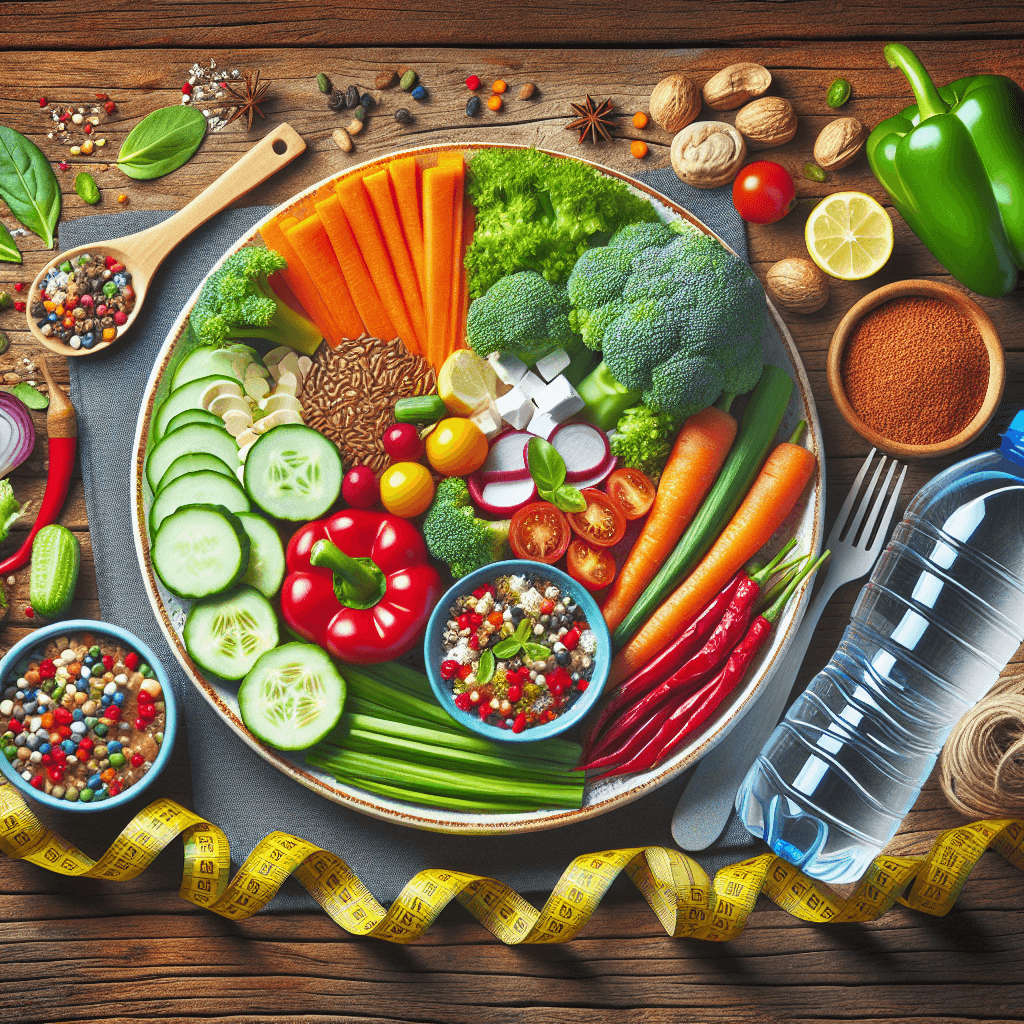The 6 ‘Nozempic’ Diet Rules to Mimic the Effect of Fat Jabs in 5 Simple Steps
Published: June 2024 | Author: Your Health Expert
In 2024, the demand for weight loss solutions like Ozempic and Wegovy has skyrocketed, with many people seeking the benefits of these “fat jabs” without the prescription, side effects, or cost. The Sun recently published an eye-opening article on the 6 ‘Nozempic’ diet rules to mimic the effect of fat jabs in 5 simple steps. This guide breaks down the science-backed strategies to achieve similar weight loss effects naturally—without injections.
Whether you have food sensitivities, allergies, or specific dietary preferences, this comprehensive guide will help you navigate the “Nozempic” approach and introduce you to tools like Food Scan Genius to personalize your journey. Read on for actionable steps, the latest research, and SEO-optimized advice for 2025 and beyond.
Understanding the ‘Nozempic’ Diet: What Is It?
The term “Nozempic” refers to a diet and lifestyle approach designed to mimic the effects of GLP-1 agonist drugs like Ozempic—without medication. Ozempic works by regulating appetite, delaying stomach emptying, and improving blood sugar. The Nozempic diet leverages natural foods, meal timing, and behavioral strategies to achieve similar results, promoting satiety, reducing cravings, and supporting sustainable weight loss.
According to The Sun’s coverage, these six rules can help you achieve the “Ozempic effect” naturally, with added flexibility for those with food sensitivities and dietary restrictions.
The 6 ‘Nozempic’ Diet Rules: Science-Backed for 2025
-
1. Prioritize Protein at Every Meal
High-protein diets are proven to increase satiety, reduce appetite, and support muscle retention during weight loss (JAMA, 2023). Aim for at least 20-30 grams of protein per meal, using sources that fit your dietary needs—plant-based proteins for vegans, lean meats for omnivores, or hypoallergenic options for those with sensitivities.
- For food sensitivities: Try lentils, quinoa, tofu, or allergy-friendly protein powders.
- For dietary preferences: Include eggs, fish, or dairy alternatives as needed.
-
2. Fill Half Your Plate with Fiber-Rich Foods
Fiber slows digestion and helps regulate blood sugar, mimicking the appetite-suppressing effects of GLP-1 drugs. A 2023 meta-analysis (Nutrients, 2023) found that high-fiber diets significantly reduce calorie intake and support weight loss.
- Best sources: Leafy greens, berries, chia seeds, oats, and low-FODMAP vegetables for sensitive guts.
- Tip: Gradually increase fiber to avoid digestive discomfort.
-
3. Embrace Healthy Fats for Satiety
Healthy fats—such as those from avocado, olive oil, seeds, and nuts—promote fullness and help stabilize blood sugar. A 2024 study (Frontiers in Nutrition, 2024) supports the inclusion of unsaturated fats for appetite control and metabolic health.
- For allergies: Choose seed-based spreads or coconut oil if nut allergies are present.
- For dietary preferences: Use extra-virgin olive oil or flaxseed oil for plant-based diets.
-
4. Eat Mindfully and Slow Down
Mindful eating techniques—such as chewing thoroughly, eating without distractions, and tuning into hunger cues—are shown to reduce overeating and enhance satisfaction (Appetite, 2023). This mirrors the “fullness” effect many report from fat jabs.
- Try this: Put down your fork between bites and savor each mouthful.
-
5. Optimize Meal Timing: Try Time-Restricted Eating
Time-restricted eating (TRE) or intermittent fasting can enhance GLP-1 secretion and support weight loss. Recent research (Cell Metabolism, 2023) shows that eating within a 10-hour window improves appetite control and metabolic markers.
- For sensitivities: Adjust fasting windows to fit your medication or health needs.
- For preferences: Choose a schedule that is sustainable for your lifestyle.
-
6. Limit Ultra-Processed Foods and Added Sugars
Ultra-processed foods can disrupt appetite regulation and spike cravings. A 2024 systematic review (BMJ, 2024) links high intake of processed foods with increased risk of obesity and metabolic disease.
- For everyone: Focus on whole, minimally processed foods tailored to your sensitivities and preferences.
5 Simple Steps to Implement the ‘Nozempic’ Diet Rules
-
Assess Your Food Sensitivities and Preferences:
Use tools like Food Scan Genius to identify potential triggers, allergens, or foods that may not work for your body. This ensures your Nozempic diet is safe, personalized, and effective.
-
Plan Balanced, Protein- and Fiber-Rich Meals:
Batch-cook or prep meals that combine protein, fiber, and healthy fats. Use Food Scan Genius to scan ingredient lists and avoid hidden allergens or irritants.
-
Set a Consistent Eating Window:
Choose a time-restricted eating schedule (e.g., 8am-6pm) that fits your lifestyle. Adjust as needed based on your health conditions or medications.
-
Practice Mindful Eating Daily:
Eat slowly, without screens, and listen to your body’s hunger and fullness cues. This reduces the risk of overeating and enhances satisfaction.
-
Track Progress and Adjust:
Use a food diary or apps like Food Scan Genius to monitor your meals, symptoms, and results. Tweak your plan based on what works best for your body.
Why Food Scan Genius Is Essential for the ‘Nozempic’ Diet
Food sensitivities and allergies can make weight loss challenging. Food Scan Genius is an AI-powered app that scans food labels, identifies hidden allergens, and suggests safe alternatives. This is invaluable for anyone following the Nozempic diet—ensuring you avoid foods that trigger symptoms, while still hitting your protein, fiber, and healthy fat goals.
- Personalized recommendations: Get meal ideas tailored to your sensitivities and dietary preferences.
- Real-time scanning: Instantly check if packaged foods align with your Nozempic diet rules.
- Track symptoms: Log reactions and adjust your plan for optimal results.
Tip: Download Food Scan Genius on your smartphone to make grocery shopping and meal planning effortless.
Recent Research: The Science Behind the ‘Nozempic’ Diet
- Protein and Satiety: A 2023 JAMA review confirms high-protein diets boost GLP-1, reduce hunger, and support weight loss.
- Fiber’s Role: A 2023 Nutrients meta-analysis links high-fiber intake to improved appetite control and reduced calorie consumption.
- Healthy Fats: Frontiers in Nutrition (2024) highlights the appetite-regulating effects of unsaturated fats.
- Meal Timing: Cell Metabolism (2023) shows time-restricted eating enhances GLP-1 secretion and metabolic health.
- Ultra-Processed Foods: BMJ (2024) associates processed food intake with higher obesity risk.
These findings reinforce the Nozempic diet’s foundation: prioritizing whole foods, meal timing, and mindful eating for effective, sustainable weight loss—without medication.
Frequently Asked Questions about the Nozempic Diet
- Is the Nozempic diet safe for people with food allergies?
- Yes, especially when you use tools like Food Scan Genius to avoid allergens and customize your meals.
- Can I follow the Nozempic diet as a vegan or vegetarian?
- Absolutely. Focus on plant-based proteins (tofu, lentils, beans), fiber-rich vegetables, and healthy plant fats.
- How quickly can I expect results?
- Most people notice improved satiety and reduced cravings within 1-2 weeks, with gradual, sustainable weight loss over time.
- Do I need to count calories?
- Not necessarily. By focusing on





